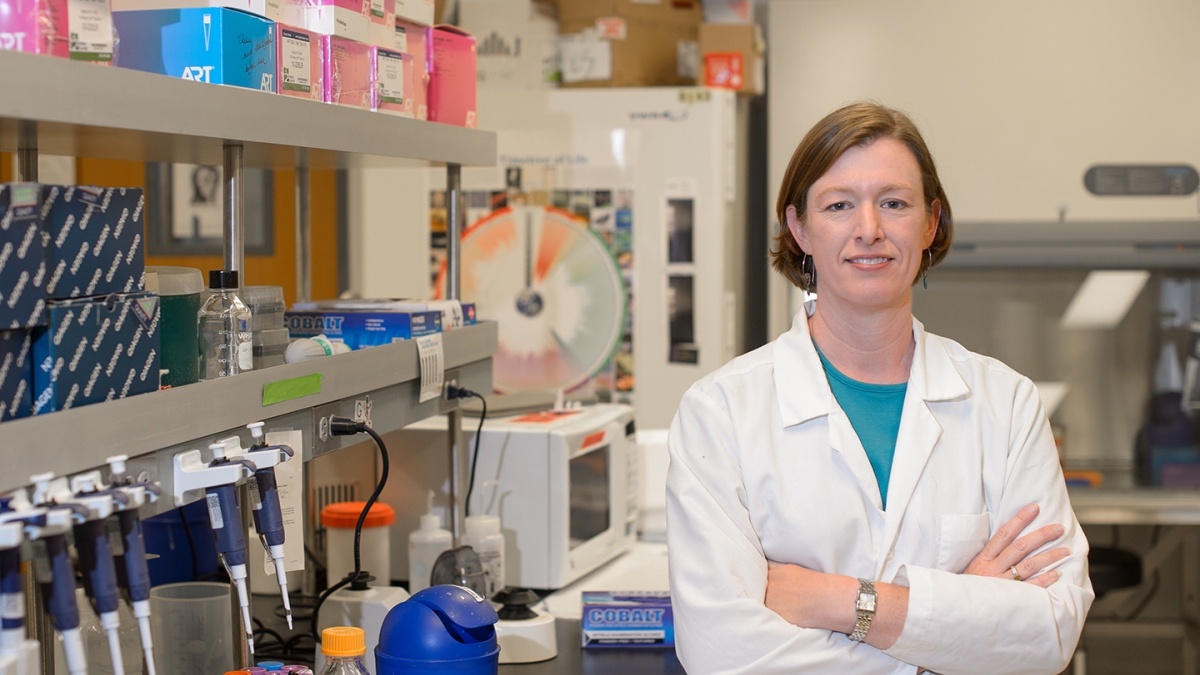How and why do new diseases emerge?
Arizona State University Regents Professor Anne Stone posed this question to the John Simon Guggenheim Memorial Foundation and has been awarded a 2022 Guggenheim Fellowship to pursue the answer.
Humans have experienced many pandemics, and the questions of how, why, when and where have been the subject of much research from historical, archaeological and biological perspectives.
Stone is an anthropological geneticist who has transformed knowledge in the genetics of infectious diseases and the evolutionary history of humans and the great apes. She has published significant work on the genetics of reemerging infectious diseases, especially leprosy and tuberculosis. Her lab showed that tuberculosis likely “jumped” into humans more recently than previously thought, and that ancient strains of tuberculosis in South America were introduced by infected seals.
It is this question of how TB spread within and among communities living in southern Peru from 2,400 to 3,500 years ago and what this tells us about the emergence of this new pathogen in the Americas that this Guggenheim-supported research seeks to answer.
“I was surprised and honored to receive this award,” Stone said, “and I am excited to use it to push my research on ancient TB forward.”
Guggenheim Fellowships are for exceptional individuals in pursuit of scholarship in any field of knowledge, who have demonstrated exceptional capacity for productive scholarship or exceptional creative ability in the arts, and exhibit great promise for their future endeavors. This year’s recipients were chosen from a group of almost 2,500 applicants from a rigorous peer review process, and were chosen based on prior achievement and exceptional promise.
“We are incredibly proud of Regents Professor Anne Stone for being selected for this prestigious fellowship,” said Patrick Kenney, dean of The College of Liberal Arts and Sciences. “Her work in the field of evolutionary anthropology is driving transformation and innovation globally, and we are eager to see what she is able to accomplish through the Guggenheim Fellowship.”
Stone has used paleogenetics techniques for extraction of DNA from ancient individuals in order to address questions about human history and pathogens. Her lab has also investigated human adaptations to diet, human population history in the Americas, and the evolutionary history of the pathogen causing Hansen’s disease (also known as leprosy).
During her graduate studies, she verified the first Neanderthal ancient DNA and contributed to information that led to a better understanding of the Tyrolean Iceman (a man frozen in the Alps about 5,000 years ago).
“Anne has always been at the forefront of emerging new technologies for extracting facets of human history only our genes can tell,” said Christopher Stojanowski, director of the School of Human Evolution and Social Change. “The Guggenheim is the latest in a long line of accolades she has earned for asking complex questions of the human past that go beyond simple migration stories. Her most recent work on human-pathogen coevolution clearly resonates with the challenges our species has faced since the beginning.”
Stone became interested in the field after double majoring in biology and archaeology at the University of Virginia. During graduate school, she was drawn to the study of ancient DNA, solidifying her pursuit of anthropological genetics.
For her doctoral dissertation, Stone conducted one of the largest genetic analyses of a prehistoric community ever before attempted, allowing her to trace the migration patterns and settlement history of the original inhabitants of the Americas and to observe how they were affected by colonization. She is now considered a primary expert in the population history of North and South America.
Stone teaches courses in ASU’s School of Human Evolution and Social Change and works closely with students in an expanded ancient DNA lab in ASU’s newest research facility as a research scientist with the Institute of Human Origins in the Rob and Melani Walton Center for Planetary Health. There, students receive invaluable guidance and hands-on learning opportunities on a variety of projects, including research into chimpanzee population history in addition to the evolutionary history of tuberculosis.
“The Guggenheim Fellowship is yet another recognition of Anne’s cutting-edge research on issues that matter to our society,” said Yohannes Haile-Selassie, director of the Institute of Human Origins. “Understanding how new diseases emerge is fundamental to how we prepare and respond to global health crises, such as COVID-19, and her research discoveries on this question will be useful to global health policymakers.”
Stone received the highest faculty honor at Arizona State University when she was selected as an ASU Regents Professor, and was also elected to the National Academy of Sciences, one of the world’s most prestigious organizations of scholars.
In addition, Stone is the an associate editor for the journal Philosophical Transactions of the Royal Society, series B; recently served as chair of section H of the American Association for the Advancement of Science; and is a member of the Scientific Executive Committee of the Leakey Foundation.
She has been a Fulbright Fellow and a Kavli Scholar, as well as a fellow of the American Association for the Advancement of Science. Her interdisciplinary approach to research is evident by publications outside of anthropology journals, including Cell, Nature and Science.
More Science and technology

Breakthrough copper alloy achieves unprecedented high-temperature performance
A team of researchers from Arizona State University, the U.S. Army Research Laboratory, Lehigh University and Louisiana State University has developed a groundbreaking high-temperature copper alloy…

4 ASU researchers named senior members of the National Academy of Inventors
The National Academy of Inventors recently named four Arizona State University researchers as senior members to the prestigious organization.Professor Qiang Chen and associate professors Matthew…

Transforming Arizona’s highways for a smoother drive
Imagine you’re driving down a smooth stretch of road. Your tires have firm traction. There are no potholes you need to swerve to avoid. Your suspension feels responsive. You’re relaxed and focused on…


